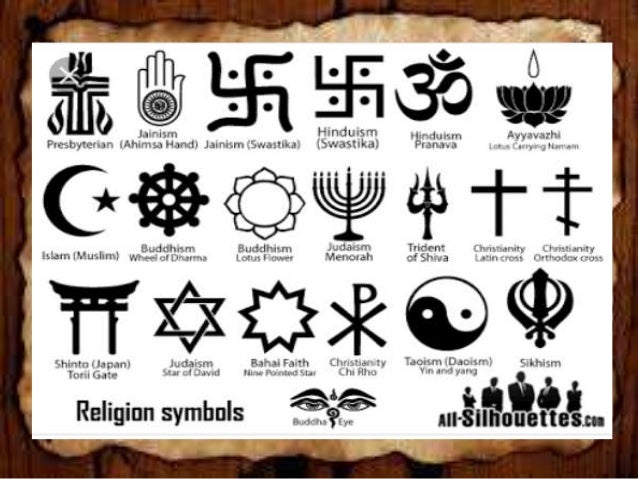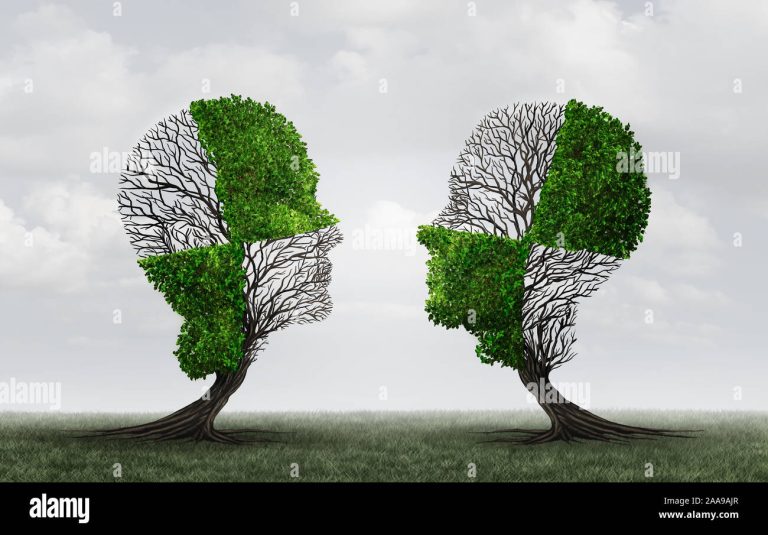What are Symbols in Communication?
Symbols in communication are arbitrary representations of thoughts, ideas, emotions, objects, or actions used to encode and decode meaning. They stand for or represent something else.
For example, the word “cat” is a symbol that represents a feline animal, but there is nothing inherent about the word itself that relates to a cat. Symbols can take the form of words, sounds, gestures, ideas, or visual images, and are used to convey other ideas and beliefs.
They play a crucial role in verbal and nonverbal communication, allowing individuals to communicate and understand each other effectively. Symbol systems, such as gestures, signs, and written language, are used to facilitate communication among various individuals and cultures.

Credit: www.123rf.com
What Are Symbols In Communication?
Symbols play a crucial role in communication as they are arbitrary representations used to encode and decode meaning. They can take the form of words, sounds, gestures, ideas, or visual images, allowing individuals to convey and understand thoughts, emotions, and concepts.
For example, a red octagon symbolizes “STOP” and a red rose represents love and compassion.
Definition And Importance Of Symbols In Communication:
Symbols play a crucial role in communication as they serve as arbitrary representations of thoughts, ideas, emotions, objects, or actions. They are used to encode and decode meaning, allowing individuals to understand and convey messages effectively. Symbols can be verbal or nonverbal and can take various forms, including words, gestures, images, or signs.
Here are a few reasons why symbols are important in communication:
- Enhance understanding: Symbols provide a shared language that helps individuals understand complex concepts or ideas. They simplify communication by condensing information into easily interpretable forms.
- Facilitate expression: Symbols allow individuals to express their thoughts, emotions, and experiences in creative ways. By using symbols, people can convey abstract concepts and subjective experiences that may be challenging to communicate solely through words.
- Promote cultural and social identity: Symbols often carry cultural or social meanings, representing shared values, beliefs, or traditions. They contribute to the formation of group identity and enable individuals to express their affiliation with a particular community or culture.
- Foster connection and solidarity: Symbolic communication helps create connections and foster a sense of solidarity among individuals. It allows people to find common ground and establish shared meanings, enhancing social interaction and cooperation.
Examples Of Symbols In Everyday Life:
Symbols are pervasive in our everyday lives and can be found in various contexts. Here are some examples of symbols commonly encountered in daily life:
- Traffic signs: Symbols such as stop signs, pedestrian crosswalks, and speed limit signs convey specific instructions and warnings, ensuring safe navigation on roads.
- Logos: Company logos, such as the Nike Swoosh or the Apple symbol, are recognizable symbols that represent brands, values, and products.
- Emojis: These digital symbols, such as smiley faces, thumbs up, and hearts, are widely used in digital communication platforms to express emotions or convey tone.
- National flags: Flags of different countries serve as symbols representing national identity, patriotism, and cultural heritage.
- Religious symbols: Symbols like the cross, crescent moon, or Star of David represent religious beliefs and traditions.
- Body language: Gestures like a thumbs up, a handshake, or a nod of the head are nonverbal symbols that convey meaning and intention.
Symbols, in these and many other forms, are essential for effective communication and facilitate understanding across diverse contexts.
How Symbols Facilitate Understanding And Expression:
Symbols play a crucial role in facilitating understanding and expression by:
- Condensing complex ideas: Symbols simplify complex concepts, condensing large amounts of information into simple and recognizable forms. This makes it easier to understand and communicate complex ideas efficiently.
- Crossing language barriers: Symbols can transcend language barriers as they often convey meanings that are universally understood. They enable communication between individuals who may not share a common language.
- Evoking emotions: Symbols have the power to evoke emotions and create a deeper impact than words alone. They can tap into shared experiences and evoke strong emotional responses, enhancing the overall effectiveness of communication.
- Supporting visual representation: Symbols can be visual representations that aid in visual learning and memory recall. They enhance the retention and comprehension of information by providing visual cues that are processed alongside verbal communication.
- Enabling nonverbal communication: Symbols, especially nonverbal symbols like gestures or facial expressions, facilitate nonverbal communication, which plays a significant role in conveying emotions, intentions, and interpersonal dynamics.
Symbols in communication bridge gaps and enable individuals to express thoughts, ideas, and emotions effectively. Whether through verbal or nonverbal means, symbols serve as powerful tools for understanding and expression in various forms of communication.
Types Of Symbols In Communication
Symbols in communication are arbitrary representations of thoughts, ideas, emotions, objects, or actions used to encode and decode meaning. They can take the form of words, sounds, gestures, or visual images. For example, a red octagon symbolizes “STOP” and a red rose symbolizes love and compassion.
Symbols play a crucial role in communication, allowing us to convey complex ideas and concepts through various means. There are different types of symbols used in communication, including verbal symbols and non-verbal symbols. Let’s take a closer look at each of these types:
Verbal Symbols
Verbal symbols involve the use of words and language to express meaning. Here are some key aspects of verbal symbols:
- Words and their meanings: Words are the building blocks of verbal communication. They have specific meanings attached to them based on mutual agreement and understanding among individuals or within a particular society or culture.
- Language and dialects: Language is a system of communication that consists of words, grammar, and syntax. Different languages and dialects exist, allowing individuals to communicate within specific communities or regions.
- Slang and jargon: Slang refers to informal words or phrases used by specific groups or subcultures. Jargon, on the other hand, refers to specialized terms and language used in particular professions or fields.
Non-Verbal Symbols
Non-verbal symbols encompass various forms of communication that do not involve words. They rely on gestures, body language, facial expressions, and visual symbols. Here are some key aspects of non-verbal symbols:
- Gestures and body language: Gestures are movements of the body or hands to convey specific meanings. Body language includes the posture, facial expressions, and movements that help express emotions, attitudes, and intentions.
- Facial expressions: Facial expressions play a vital role in communication, as they can convey a wide range of emotions, such as happiness, sadness, anger, surprise, or disgust. They can also provide cues about a person’s thoughts and reactions.
- Visual symbols and icons: Visual symbols are graphical representations that convey meaning. They can include symbols like road signs, logos, emojis, or icons used in digital communication to represent various concepts, actions, or objects.
By using both verbal and non-verbal symbols in communication, we can enhance our ability to express ourselves effectively and understand others more accurately. Understanding the different types of symbols allows us to navigate the complexities of communication and connect with others on a deeper level.
Symbolism In Various Communication Channels
Symbols in communication refer to arbitrary representations of thoughts, ideas, emotions, objects, or actions used to encode and decode meaning. They stand for or represent something else, providing a visual or verbal shorthand for communication purposes. An example of a symbol is using a red octagon to signify “STOP.
“
Symbols play a crucial role in communication, allowing us to convey complex ideas, emotions, and concepts. They are arbitrary representations that stand for or represent something else. Symbols can be found in various communication channels, from written communication to visual media and digital platforms.
Let’s explore the symbolism in different communication channels:
Symbolism In Written Communication:
- Use of metaphors and similes: Metaphors and similes are figures of speech that use symbols to draw comparisons and create vivid imagery in writing. They enhance the reader’s understanding and engagement with the text.
- Symbolic representation in literature: Literature often employs symbols to convey deeper meanings, themes, or messages. Symbolism in novels, poems, and plays adds layers of interpretation and fosters a more profound connection between the reader and the text.
- Symbolic meanings in advertising and branding: Advertisements and branding frequently use symbols to create associations and evoke specific emotions or desires. Logos, slogans, and visual elements communicate messages beyond their literal representation.
Symbolism In Visual Communication:
- Visual symbols in graphic design: Graphic designers utilize symbols to communicate ideas and concepts effectively. Icons, logos, and other visual elements in design serve as symbols that convey meaning and facilitate quick comprehension.
- Cultural and religious symbols in art: Art often incorporates symbols that hold cultural or religious significance. These symbols allow artists to express ideas, beliefs, and cultural values, connecting with audiences on a deeper level.
- Symbolic representation in movies and photography: Movies and photography utilize symbolism to enhance storytelling and convey emotions or themes visually. Symbolic objects, colors, or settings can add layers of meaning and create a more immersive experience for viewers.
Symbolism In Digital Communication:
- Emojis and emoticons: Emojis and emoticons serve as symbolic representations of emotions, expressions, or actions in digital communication. They help convey tone and add nuance to text-based conversations.
- Symbolic meanings in memes and internet culture: Memes and internet culture often rely on symbolic images, phrases, or references that carry shared meanings within online communities. They contribute to the creation of internet slang and the development of digital subcultures.
- Symbolism in social media hashtags and trends: Hashtags and trends on social media platforms often signify specific ideas, movements, or conversations. They serve as symbols that unite users around common interests and facilitate participation in online discussions.
Symbols in communication channels are powerful tools that enhance the effectiveness of conveying messages. Whether used in written content, visual media, or digital platforms, symbols deepen understanding, evoke emotions, and foster connections between communicators and their audience.
Frequently Asked Questions For What Are Symbols In Communication?
What Are Symbols In Verbal Communication?
Symbols in verbal communication are arbitrary representations of thoughts, ideas, emotions, objects, or actions that are used to encode and decode meaning. They serve as a stand-in or representation for something else. For example, the word “cat” is a symbol that represents a specific animal, but there is nothing inherent in the word itself that relates to the actual animal.
Symbols can also take the form of gestures, sounds, or visual images, and they are used to convey ideas and beliefs. For instance, a red octagon symbolizes “STOP,” blue lines on a map represent rivers, and a red rose symbolizes love and compassion.
Symbols play a crucial role in communication, allowing individuals to convey complex ideas and concepts efficiently.
What Is Symbol And Examples?
Symbols are arbitrary representations of thoughts, ideas, emotions, objects, or actions used to encode and decode meaning. They take the form of words, sounds, gestures, ideas, or visual images and are used to convey other ideas and beliefs. For example, a red octagon is a common symbol for “STOP”; on maps, blue lines often represent rivers; and a red rose often symbolizes love and compassion.
In verbal communication, symbols are used to represent concepts, feelings, and objects. They are not inherently connected to what they represent, but are agreed upon by a group or community. Symbols are an important aspect of communication as they enable us to convey complex ideas and concepts effectively.
What Form Of Communication Uses Symbols?
Symbols are used in various forms of communication. For instance, symbols play a crucial role in verbal communication by representing thoughts, ideas, emotions, objects, or actions to convey meaning. They act as arbitrary representations that stand for something else. For example, calling a cat a “cat” is a symbolic representation.
In addition, symbols can take the form of words, sounds, gestures, ideas, or visual images. They are used to convey other ideas and beliefs. A red octagon is a common symbol for “STOP,” blue lines on maps represent rivers, and a red rose symbolizes love and compassion.
Moreover, symbols are also utilized in augmentative and alternative communication (AAC), which involves different symbol systems to aid communication. These symbol systems may involve gestures or signs. So, symbols are widely employed in diverse communication contexts to convey meaning effectively.
What Are Symbols In Verbal Communication?
Symbols are arbitrary representations of thoughts, ideas, emotions, objects, or actions used to encode and decode meaning. They stand for or represent something else, such as calling a cat a cat. Verbal Communication refers to the use of spoken or written words to share information.
Conclusion
Symbols play a crucial role in communication as they serve as arbitrary representations of thoughts, ideas, emotions, objects, or actions, encoding and decoding meaning in various contexts. Whether in verbal or nonverbal communication, symbols allow us to convey complex messages and concepts efficiently and effectively.
From words and sounds to gestures, visual images, and ideas, symbols take different forms and are used to convey a wide range of meanings. For example, a simple red octagon on a traffic sign is universally understood as a symbol for “STOP,” while blue lines on a map often represent rivers.
Even a red rose can symbolize love and compassion. These examples demonstrate how symbols transcend language barriers and cultural differences, enabling communication across diverse contexts. By understanding the power of symbols, we can enhance our communication skills and create meaningful connections with others.
Whether it’s in everyday conversations, professional settings, or artistic expressions, symbols serve as the building blocks of communication, bridging gaps and fostering understanding. Symbols are not simply arbitrary representations; they are fundamental elements of communication that enrich our interactions and facilitate the exchange of ideas and meaning.
Unlocking the potential of symbols empowers us to communicate more effectively and connect on a deeper level with those around us.





